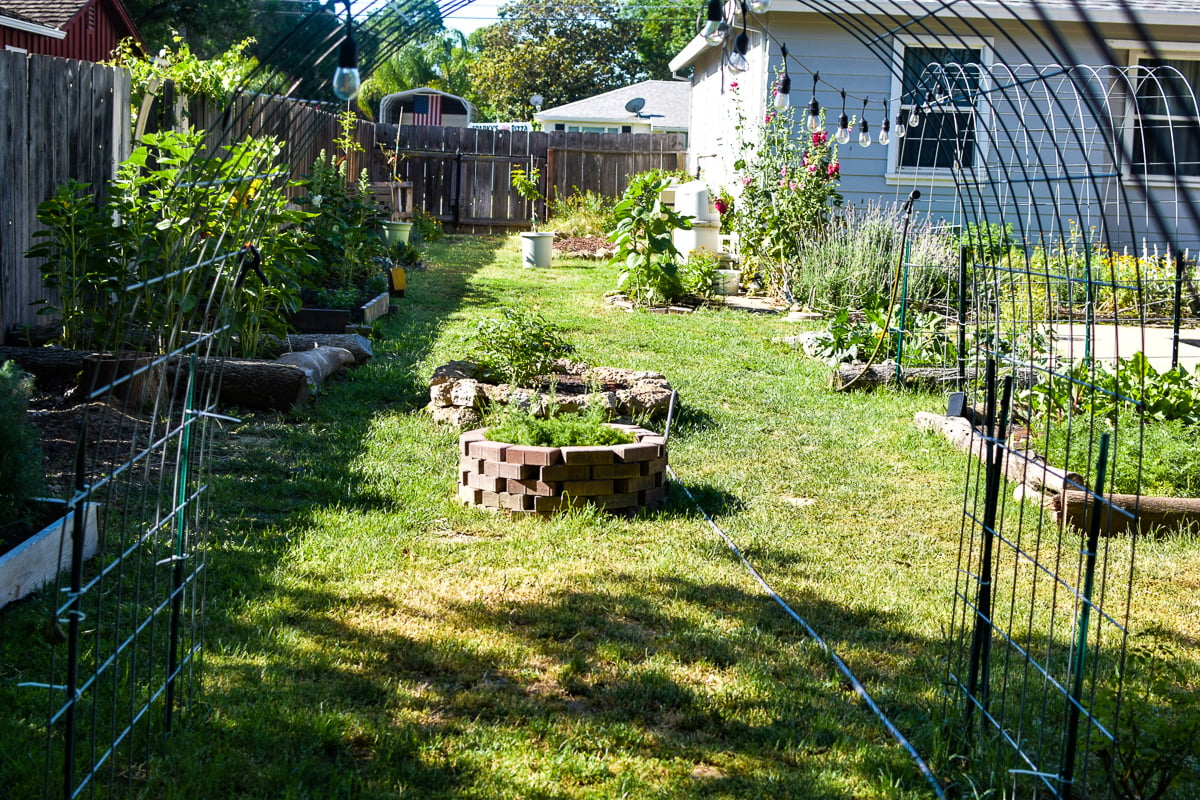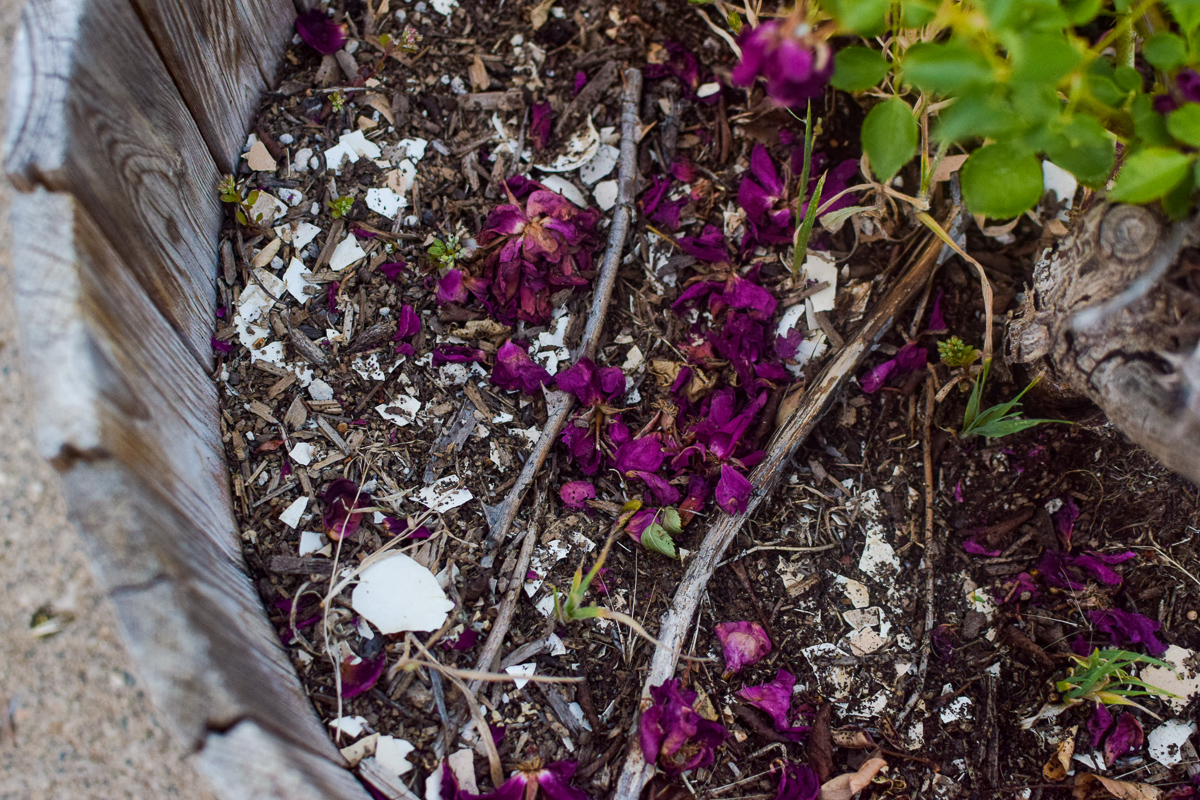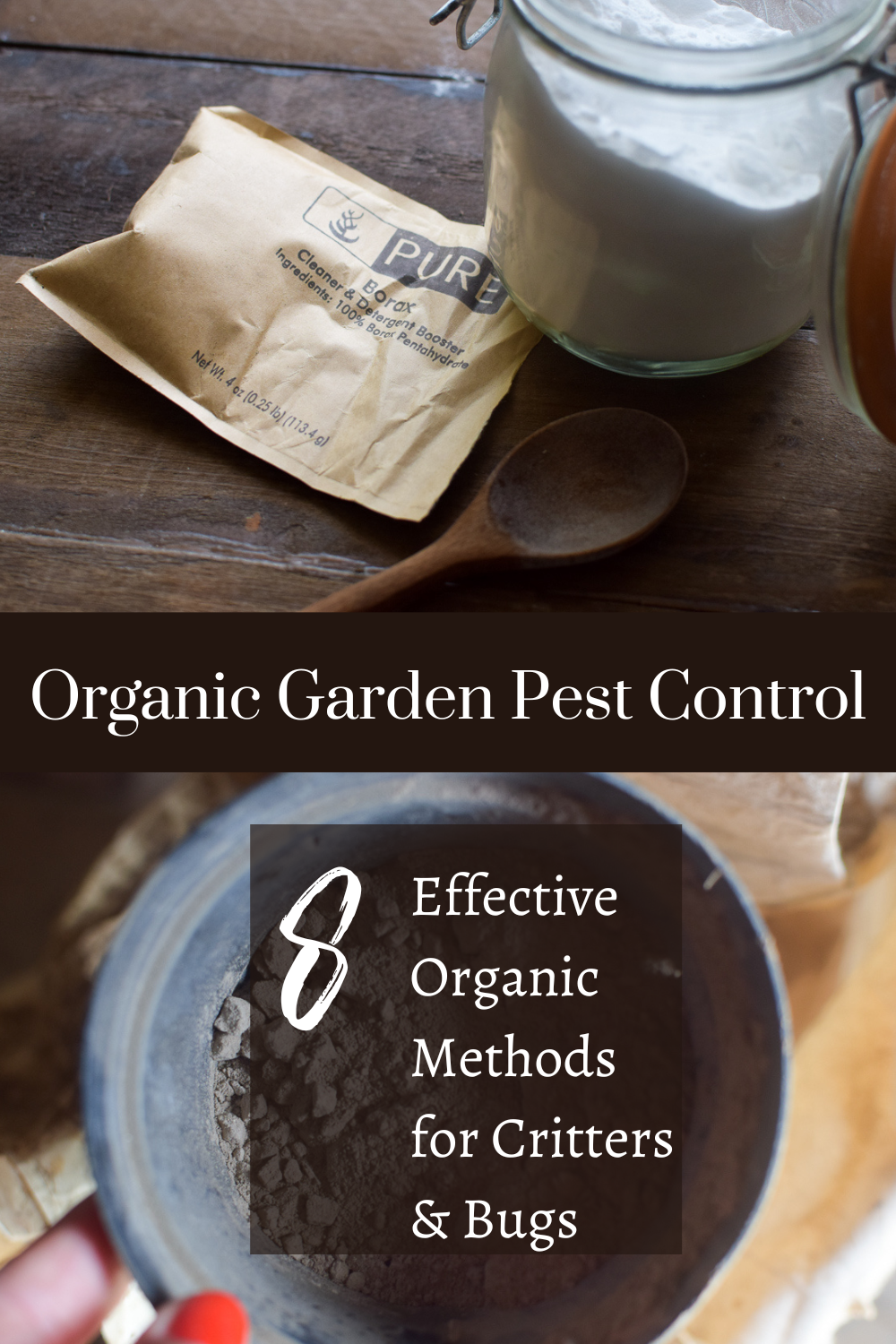Organic Garden Pest Control
Today I am sharing 8 Effective Organic Garden Pest Control methods for both critters and insects.

Each gardening season has had its issues for me. The moment I seem to understand and get in some sort of “zone”, I am quickly shoved back into the novice gardener status I try desperately to grow out of. I wouldn’t call myself a novice at this point but I am not in the “pro” zone by any means. It is always a learning game.
But this year, it certainly is my best yet. I am doing all the things I have learned along the way. I don’t know about you but my corner of the world seems to be home to a variety of pests.
From neighborhood cats using my beds as a potty to the relentless squirrels digging up my freshly planted garden. It can be disheartening to stumble out to your beautifully worked beds and find them in upheaval.
Lest we forget the garden is also home to many bugs and being an organic gardener there is no shortage of those. As the famous gardener Monty Don points out that in organic gardening you can’t fight nature, you can only work with it. And while I wholeheartedly agree with Mr. Don, I have found some clever ways to deter it. For me, that has been the most successful approach to organic gardening.
I wanted to share with you a few of these Organic Garden Pest Control measures as they have tremendously helped me in my garden over the years.
Organic Garden Pest Control For Critters
Cayenne Pepper
No, we are not making chili or some sort of dish here, we are buying the largest jug we can find of this wonderful stuff to sprinkle on the dirt of our beds. Why you might ask? Well, I tried this nifty trick in complete desperation one afternoon. A moment when I had all but almost thrown in the towel on gardening.
You see, my backyard is lined with beautiful privet trees that seem to be what I can only describe; as the headquarters of the Northern American Squirrel community. Each day they are out running about my yard, digging in various pots, beds, and even our lawn.
Small holes are found regularly and even with me cutting down the trees next to our house; it still didn’t stop them from coming up and doing their damage. It was a full-on war here. I tried netting, ground covers, plants they don’t like, and even animal urine. It did not seem to do a thing. Not until I found this trick.
The best part about this, you only have to do it once or twice a week depending on your watering schedule. But once they realize what’s in the dirt, they leave and don’t come back! Every once in a while a newcomer will venture into my garden and it is usually about the time that I ease up on applying it to the dirt. I’ll find the little digging hole and then just re-pepper the area. That is it! It works like a charm.
This works for digging sort of animal honestly. Those pesky neighborhood cats that like to frequent garden beds to relieve themselves. A problem I have had frequent issues with until this discovery. So grab a bottle and give it a try. I think you will find it quite effective.

Bird Netting
The next best thing for little critters who like to dig is bird netting. It is easily found in any sort of feed store and even Home Depot-type stores. It is easy to set over beds and you can fold it up and reuse it next year so it is definitely cost-effective too.
I cut squares that fit over my beds and when I sow seeds I place the bird netting lid over each bed to ensure nothing disturbs my brand-new seedlings. It works well for directly sowing seeds. However, once the plants start to grow I switch over to my trusty cayenne pepper.
Egg Shells
For potted plants, I find crushing eggshells to work wonderfully when sprinkled around the base of a plant all the way to the start of the pot. This way it doesn’t give the animal any room in the dirt to dig. I especially do this for roses as that seems to be one of their favorite pots to dig in. The sharp little shell pieces prevent them from digging in the dirt. So instead of tossing those eggshells place a bowl next to your stove and save them for your potted plants.

Organic Garden Pest Control For Bugs
Diatomaceous Earth
What is this powdery substance that is safe for mammals but deadly to those pests with an exoskeleton that includes, mites, lice, roaches, ants, earwigs, squash bugs, snails, thrips, and aphids? To name only a few garden pests. This miracle powder is found in almost any hardware or lawn and garden center around. One thing to note is that you will want the food-grade stuff for your garden beds.

To Use: Sprinkle around the base or foliage of your plants. If you see the garden pests, like aphids, you will want to make sure you sprinkle the backsides of your plants where they like to hide to make sure they are within the powder treatment. I use this after watering or on days when I am not watering because water will wash it away rendering it ineffective. If you have a pest issue that needs multiple treatments, you will just need to re-powder the area after watering.
This year, I have gotten my first case of squash bugs on zucchini to go along with the usual case of aphids. Worried this would be too big of an issue, I decided to douce the area top to bottom with this powder for several days at a time. Within 4 days the problem was gone. To my surprise, I have yet to see a single squash bug since. And thank goodness too because they are ugly things to come across!
Note: It is recommended that you wear a facial covering to prevent breathing in the fine powder as it might irritate the body if breathed in.
Powdered Sugar and Borax
We have sunflowers growing all over our property and that means the critters are around. The sweet nectar is tempting to many and for most, I don’t mind. But those ants. They are annoying to deal with and it can take the joy away from cutting them for vases as I find myself smacking the ants off my counter. One great way I have found to deal with this issue is by combining equal parts of powdered sugar and borax.

To Use: I cut the bottoms off of a water bottle to use as a small tray to lay at the base of the sunflowers affected. Mix equal parts of both powders add the mixture to the small tray, then place at the base of the sunflowers. You don’t need a lot in fact a tbsp of each will suffice for each area.
The only thing you will want to make sure of is when you water your affected plants. Be sure to remember to pick up the small trays so they don’t get washed out. Replace when done. This method works within 24 to 48 hours. Within just a few days you should notice a big difference in ant traffic.
Neem Oil
This oil appears to be a magical natural oil. However, I would say it works just as effectively as anything else on this list. I have to use a combination of all of these items. Because unfortunately pests just require a combination of methods in the organic garden. Neem Oil is a vegetable oil pressed from the fruits and seeds of the Neem tree.
This tree is usually found in the indigenous parts of the world. Though it is a natural oil there are side effects to this oil so make sure to use it with caution and to rinse food well when harvesting. This oil will help to kill soft-bodied insects when sprayed directly on them. This includes aphids, mealybugs, whiteflies, thrips, and mites. All things we do not want in our gardens.
Sudsy Water
To make this little concoction, you simply mix the water with either a tbsp of dish soap to a 16 oz squirt bottle of water.
To Use: Spray it on the stems, leaves, and buds of your plants. I like using this one for my roses as I find aphids there yearly and this solution is simple to apply for this issue. It is best applied in the early morning hours or evening.

Jalapeño Water
Fill a mason jar with chopped jalapeños and let it soak in the water. After a week, drain the jalapeños out and fill a squirt bottle with the jalapeño water. Add a tsp of dish soap and shake the bottle to mix. The dish soap will help the jalapeño water stick to the plant.
To Use: Simply spray your plants making sure to get underneath the foliage where pests like to hide. I find this works great for aphids and spider mites if you catch them before you have a full-on outbreak. If you find you do have an outbreak of aphids, be sure to spray them with your garden hose to remove large clusters easily. Then treat the plant. It is best to treat the plant early in the morning or evening.
I hope this post on Organic Garden Pest Control is helpful and that it provides you with great tips so that you can be successful in your organic garden this year.

Shop This Post
Cayenne Pepper (5 lb container)
Pin For Later

Check Out Similar Posts Below
DIY Garden Trellis For Climbing Plants
Backyard Chickens For Beginners
**Disclaimer: This post may contain affiliate links, which means I may receive commissions if you choose to purchase through the links I provide (at no cost to you).

![My Second Season in the Garden [Zone 9b]](https://aquaintlife.com/wp-content/uploads/2020/02/my-second-season-in-the-garden.jpg)




